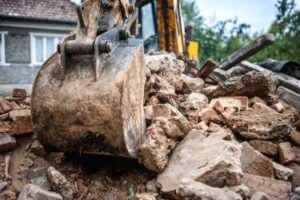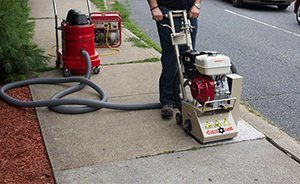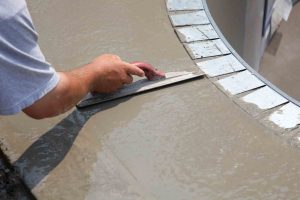Concrete is a versatile construction material used for a wide variety of residential and commercial applications. This versatility provides many benefits, but it can also pose challenges. For example, anyone seeking to repair, modify or remove a concrete surface or structure must be alert to the possibility of running into underlying materials. Common examples of these materials include utilities, metal rebar and pre- or post-tension cables. While professionals know how to identify these potential obstructions and avoid them, untrained personnel could easily cause damage and expose themselves to accidental injuries. Let’s look at some of the specific risks that come with reliance on non-specialist workers and be sure to understand the situation when it comes to concrete safety.
Utilities
The term utility applies to a broad range of commercial and residential services, including:
- Water
- Sewer
- Natural gas
- Power
During construction, the lines (i.e., pipes, cables, etc.) used to provide these services are often buried under a concrete structure or surface. Over time, information on where utility lines are located can be forgotten, lost or simply overlooked. This means that, without the expertise required to locate buried utilities, anyone cutting through concrete could potentially run into major problems. Specific issues associated with cutting through a utility line include:
- Losing the service provided by that line
- Interior or exterior damage caused by the broken line
- Injuries to nearby personnel
- The expense required to repair the line and any collateral damage
Rebar
Rebar (reinforcing bar) is the term for the embedded bars or wire mesh commonly used during concrete installation. These materials provide an essential benefit by increasing concrete’s tensile strength, or ability to withstand forces that want to pull concrete apart. Most rebar is made from carbon steel. In addition, some manufacturers make their products from stainless steel, carbon fiber or glass fiber.
Several serious problems can occur when rebar goes undetected during concrete cutting. For example, anyone who unexpectedly cuts into a piece of this material has a significant risk for personal injury. In addition, rebar damage can lead to construction delays and rising project expenses. Finally, since rebar must remain intact to perform its task of increasing tensile strength, the surrounding concrete may undergo a substantial drop in structural integrity. In turn, this loss of integrity can lead to the creation of an unstable structure and an unsafe work environment.
Pre- and Post-Tension Cable
Builders can also increase the strength of concrete with pre- or post-tension cables made from steel. Both types of cables are put into position before concrete pouring occurs. Pre-tension cables are tightened (or tensioned) before concrete pouring, then gradually released as the structure or surface hardens. Conversely, builders tighten post-tension cables after poured concrete begins to harden.
Damage to a pre- or post-tension cable that’s still under tension can lead to major worksite hazards. In some cases, the force of a snapping cable may be sufficient to cause severe or fatal injuries to anyone in the vicinity. Cutting of a pre- or post-tension cable can also significantly compromise the structural integrity of concrete. In this situation, repair of the cable itself can easily lead to thousands of dollars — or even tens of thousands of dollars — in expenditures. This does not include the cost of any required worksite delays and collateral repairs.
Call on a Professional for Assistance
Unlike general contractors and other untrained personnel, experienced concrete cutting professionals know how to scan for obstructions before their work begins. The technology used for this purpose can vary from company to company. However, the end result is the same: a safe work environment, efficient cutting procedures and avoidance of injuries and construction delays. While it may cost a little extra to hire an expert, nothing can beat the benefits that come with peace of mind.



